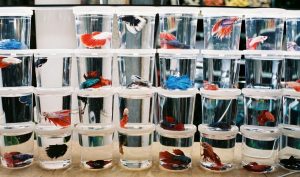COVID still exists: When is the queer party no longer the protest?
By: Liz Duck-Chong

I’ve recently been looking through old photographs – observing the past decade fleetingly displayed in quick-posed portraits and blurry dancefloor vignettes.
As I flick through in a vague chronology, I see myself growing and opening up; relationships changing, blossoming and imploding, and moments of intoxicated catharsis in loving crowds.
I was a latecomer to this glittering queer world where many generations have swayed to the same basslines. Upon entering, I was immediately fascinated by the history of these spaces. Maybe there’s an element of placebo, but when entering a queer party, it can feel like passing into a world of fabled revelation and rebellion. There’s an undeniable spiritual energy that passes between our bodies when we move in synchronised chaos.
Image: Sergi Dolcet Escrig
Rather suddenly, these photos I’m looking at shift to another world: one with a more inner-focused lens.
The collection becomes all neighbourhood walks and portraits of friends posed six-to-eight feet away. We’re often masked, a knowing tiredness across our faces. During this time, our shared reflections of smaller lives were plastered across our grids and timelines.
I’ve since watched social media slowly tick over from shared infographics and well-fed sourdough starters back to the regular fare of house parties and public events. My feeds are now increasingly dense with the steam of packed rooms, maskless group bathroom selfies and the impossible-to-capture release of rhythmic physical abandon.
Jealousy tickles at me, but I’m too heartbroken by the dissolution of a social contract I imagined agreed on by us all for the jealousy to take root.
As the pandemic began, we took pride in caring for one another. Where has that pride gone?
It’s no secret that many mainstream parties we see today sprung from protest movements.
U.S. Pride celebrations stem in no small part from Christopher Street Liberation Day at the site and anniversary of the Stonewall raid. The origins of our own Sydney Mardi Gras are mired not just in pride, but in protest against police brutality and state violence.
As we dance in recognition of the victories won and the communities who put their bodies on the line to win them, what responsibility do we have to push further? To advocate for a fairer and more just world? What would it look like if this responsibility asked us to no longer dance at all?
A year ago, in the aftermath of last year’s Mardi Gras and the National Gallery of Victoria’s multi-disciplinary and archival exhibition QUEER: Stories from the NGV Collection, Sylvia Aramchek wrote of a similar sadness. She acknowledged that it is, of course, not possible to paint every person the same. For every individual person, there’s a reason for an action, or a calculated justification of risk.
However, at the time of the QUEER exhibition, there seemed to be a temptation to shy away from responsibility for the safety of people more at risk, particularly of COVID. Instead, blame was laid on the tourists, the corporates or just whoever is more privileged than us.
“No blanket statement can account for every single queer person, but so many of us are complicit that I’m reluctant to imply that it’s just someone else’s problem,” Aramchek wrote.
“In the eyes of the virus,” she argued, “it’s all the same thing.”
In the lead up to this year’s WorldPride season, I couldn’t help but notice the same building feeling – not just of COVID anxiety, but of a deep sadness.
Queer gathering being intrinsically linked to partying and events has been an accessibility issue for some time. The community doesn’t have a great track record of solidarity with people with disabilities, and that’s not anything new, even if COVID has certainly amplified it.
Despite how it is presented by many groups and governments, COVID-19 remains a real and present danger.
A growing body of evidence is showing that even mild cases can have long-term negative effects on many parts of our lives and bodies. These impacts are shown to increase in severity with each reinfection, let alone when interacting with existing illnesses or chronic conditions.
While we are told about our personal responsibility, our potential herd immunity, and even the wishful promise of our being back to normal, the data paints a far steadier picture of a virus that lives alongside us as we return to work, to school and to our lives as they once were.
I constantly ask myself: Who am I to tell people to not dance? Who am I to ask them to sit out the burning absolution that music gives us, let alone in a time when so many of us feel that thin thread between now and total breakdown? There continues to be a risk in congregating, but should I not afford each person the same ability to calculate and take risks as I grant myself?
Yet how can we claim to have solidarity for our siblings with disabilities and chronic conditions, who cry out, at not just being excluded from our spaces, but being declared statistically expendable to the economy?
When gathering has been a critical element of sharing and loving one another for so long, how do we relearn what those actions look like in an entirely new context?
Responses to COVID-19 have been deeply politicised, with exhausting partisan debates erupting over restrictions, masking, vaccines and more. This is all in the face of an unmoved foe: a virus that has no agenda but to replicate, growing ever more effective at doing so.
In lieu of governing bodies taking the cries of the most vulnerable in our society seriously, I believe it forces our hand. If there is no way back to normal that doesn’t abandon one group or another, how do we reinvent normal so that no one is left behind?
As we emerge from the bustling glamour of WorldPride and look to a future of “new normal”, how can we rebuild community to hear the voices of those who are so often spoken over? How can we uplift those whose needs are written off as unnecessary or inconvenient?
The best moment to plant the seed of accessibility in our spaces was when they began, but the second best moment is now.
I still make constant compromises, as we all do. I sit outdoors at a cafe with a friend for a moment’s respite and care. I cautiously visit a few friends indoors and we inevitably suck in the same air eagerly after so long.
But I can’t help but harbour a constant longing – one that might one day overpower my caution and guilt, and send me into a crowded, ecstatic drollery. Maybe my greatest compromise is to see my life as radically different to what it once was. I don’t lack desire for a dancefloor, but the desire for a community that addresses the needs of others’ wellbeing and safety before the wants of our own bodies is still a stronger desire.
I still think about those early photos and the dark places they depict: the heat of a million different loves rinsing sweat off our bodies. They only make me believe more strongly that we can and will find that love in other places and forms.
The protest once at the core of these spaces remains, but must also undergo metamorphosis, seeking out where it’s most needed.
The sense of shared purpose in a crowd of strangers may have once been how we showed up for one other, but for now, maybe the best form of protest I have is staying home.
Liz Duck-Chong is a freelance writer, health researcher, carpenter, filmmaker and peer worker, whose essays, poetry and non-fiction have been published widely.














Thank you for articulating so precisely what I’ve been feeling all this time. I miss dancing, but I’m not willing to sacrifice my life or my wife’s life for any in-person gathering, and especially not in pursuit of some fabricated responsibility to support an industry.